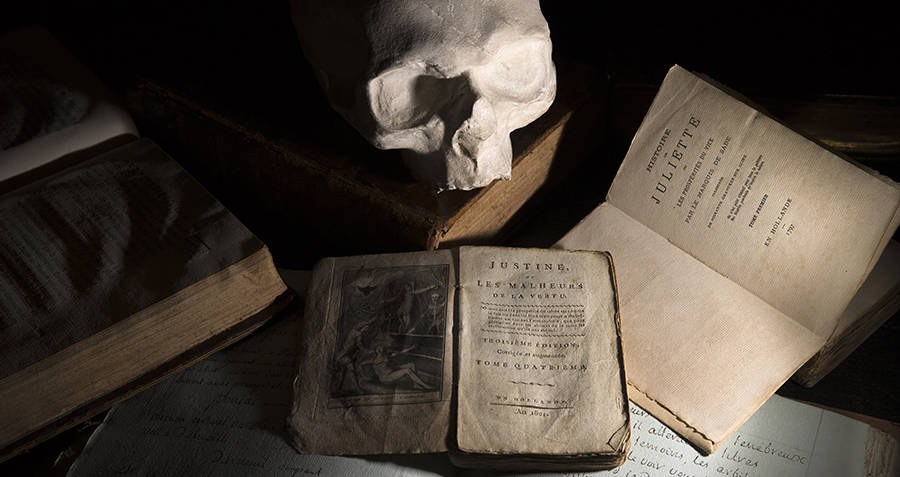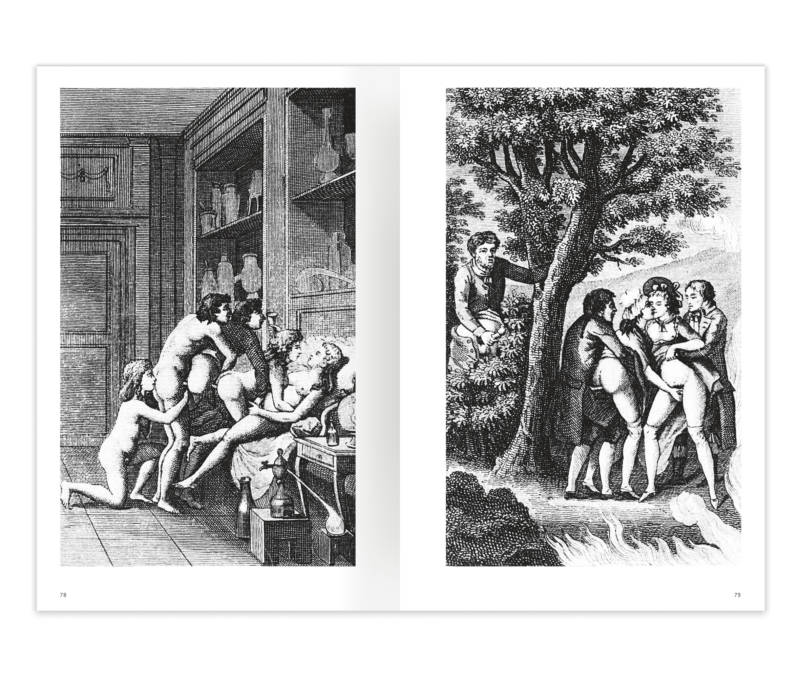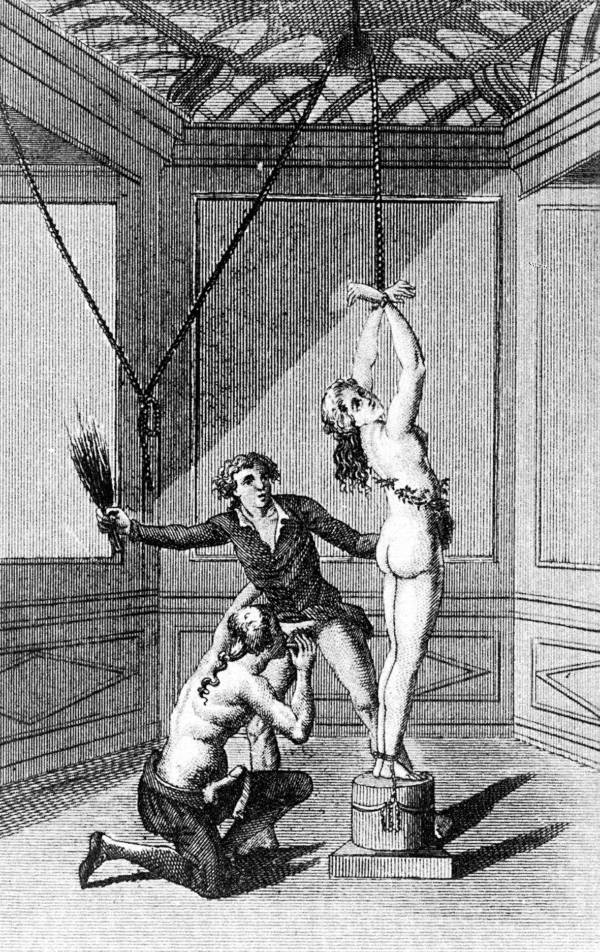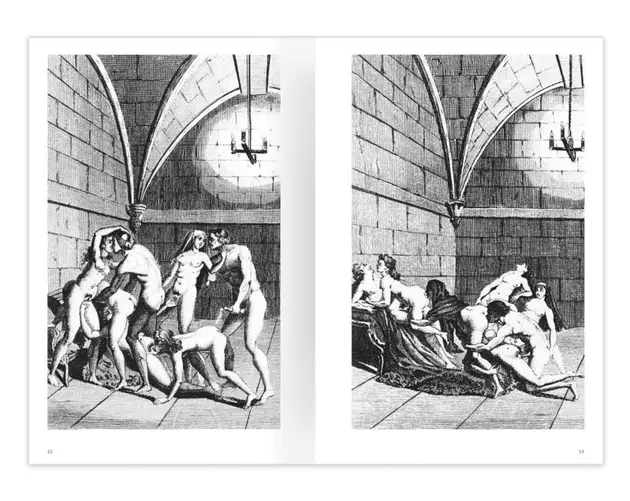Marquis de Sade is known as the father of written eroticism. What many don't know is that the nobleman's life was more sadistic than his work.
In the age of 50 Shades of Grey and millennial "hookup culture," it's become more and more common to hear conversations about sexual proclivities, orientations and preferences.
There's a good chance that at some point in your life you've heard the term "sadism" though maybe not of its namesake, the Marquis de Sade.
The Marquis de Sade was an 18th French century nobleman, famed for his erotic novels which inspired the term sadism to describe sexual cruelty. To a select few, he was a literary libertarian who freed the public from the shackles of prudish society through the introduction of an entirely different kind of restraint.
To most, Marquis de Sade's work was blasphemous and unfit for polite society, and often he was prosecuted or imprisoned. His books were even banned for almost two centuries.
Now, you can view illustrations of his explicit works in a new collection by Goliath Books. The pieces, engraved by an artist commissioned by de Sade himself, remain unsigned as their creator had no interest in being associated with their lewd nature. De Sade, on the other hand, had few qualms about this kind of exposure.
Think of it as a 18th-century version of 50 Shades of Grey, only if 50 Shades of Grey didn't hold anything back-- which, I can assure you it did, after reading just three pages of de Sade's 'Philosophy in the Bedroom.' In comparison, 50 Shades of Grey might as well be a children's book. After all, the man is literally the inspiration behind the idea of sadism.
But the Marquis' beginnings were the same as that of the prudish nobles he hoped to liberate.
Marquis De Sade: His Early Life
Born Donatien Alphonse Francois Comte de Sade in 1740, the marquis began his life in a noble family. His mother, a lady in waiting to the French royal family, had intended that her son be a playmate of the royal children. However, it became evident even from a young age that the young Marquis had no intention of being a rule follower.
After he began one too many fights with the young royals, the Marquis de Sade was sent to live with his uncle. He was well educated throughout his youth and attended a Jesuit school before he joined the academy for the King's Light Cavalry. The cavalry was well known for admitting only the finest sons of the best families.
So it was only after he served in the Seven Years War that his sexual proclivities emerged. Some de Sade experts say that this was due to his rigid upbringing in a prudish family, with an absent father, attending a school that promoted shame and humiliation. Ultimately, no one can be certain what is responsible for this noble army boy's transformation into one of literary history's most deviant authors.
The Beginning Of Sadism
The Marquis married his first and only wife, Renee-Pelagie de Montreuil, in 1763 after meeting her for the first time only two days before the wedding. The marriage was arranged by the newlyweds' parents, as the Montreuil family was wealthy, yet socially inferior to the de Sade family. Still, there were benefits for both parties to gain from the union.
The Marquis de Sade moved in with his new bride and her family in Paris, but he kept a secret apartment. It was there that de Sade began to test the limits of human sexuality.
Shortly after his wedding, de Sade locked a young prostitute in his apartment. He allegedly stomped on a crucifix while he screamed blasphemies and insisted that she whip him.
Within the year, numerous bordellos around Paris had been warned about de Sade and were instructed not to let him take girls back to his private apartment.
Though he continuously met with and allegedly abused prostitutes in the years between, it wasn't until 1768 that the Marquis committed his next vicious act.
On Easter Sunday, de Sade brought a prostitute to his apartment, where he repeatedly whipped her and dripped hot wax on her body. Though she was paid by the de Sade family to drop the charges, the King was forced to imprison the Marquis for his crimes. Rather than imprison him, the King forced de Sade into exile at his lavish chateau in Provence.

Wolfgang Kaehler/ Getty ImagesWhat is left of de Sade's home, Chateau de Lacoste, in the city of Provence.
The exile hardly worked to curb his desires as his remote chateau simply served as a refuge for de Sade to escape persecution for the crimes he would commit while there. One of these acts would be his most disturbing.
The Deviancy Intensifies
Along with the help of his wife, de Sade imprisoned five young women and one young man in his chateau. For six weeks, de Sade and his servant as well as occasional lover, Latour, would repeatedly abuse and sodomize the prisoners. De Sade and his accomplice would turn these acts into a theatrical production which his wife would watch. The two men also used an aphrodisiac called "Spanish fly" that incapacitated the young women.
After the ordeal, villagers shied away from de Sade. His wife's mother shortly received word of his depravities and she helped the Parisian authorities to hunt him down. He and Latour fled to Italy, but to no avail. De Sade was imprisoned with his servant and the two were sentenced to death in September of 1772.
De Sade and Latour managed to escape imprisonment and returned to his Chateau where together with his wife the three continued to engage in lewd sexual acts. Finally, in 1776, the Marquis was sentenced to imprisonment in the dungeon of Vincennes.
Imprisonment And Later Life
In total, de Sade spent over 30 years behind bars and was even transferred to the Bastille at one point. His wife retired at a convent.
While imprisoned, de Sade recorded his sexcapades. He wrote his atheist manifesto, Dialogue Between a Priest and a Dying Man, and a 39-foot-long account of his perversions in what is known as 120 Days of Sodom.
When French Revolutionaries stormed the Bastille, de Sade was sent to a mental institution in Paris. Here he began work on what is potentially his most known work, Justine, which features the various sexual torments of a young woman prisoner at the hands of various partners, including some religious figures. His imprisonment was a prolific period of writing for de Sade and some of his works were picked up as plays though not all were performed.
Though de Sade was liberated from the asylum for a brief time, in which he was able to save his ex-wife's parents from the Reign of Terror, he was ultimately sent back to prison where he would die.
The Legacy of Marquis De Sade
His works were banned in France until 1957, and have seen new life in the recent literary world. Critics have reviewed his works in recent years and claimed they may have been the first works of sexual liberation, some even go so far as to claim him a feminist.
In Justine, the young woman explores her sexuality and eventually travels the world experimenting with it. In Philosophy in the Bedroom, two of the characters are women and are apparently free to make their own choices while the male figures are unyielding in those decisions.

Joel Saget/ Getty ImagesThe works of the Marquis de Sade, including Juliette and Justine.
However, not even de Sade's biggest admirers can claim him a hero. There's no doubt that his works were inspired by his life, and that the numerous orgies and encounters with prostitutes that he had were anything less than sexually deviant and borderline abusive. Critics for centuries have agreed that the writings are that of a deviant man, obsessed with sexual sadism and cruelty.
Until recently, his descendants had refused to use the name de Sade and in essence, had wiped the man from their family tree. It was only when one of his last living relatives, Count Hugues de Sade, began capitalizing on his ancestors fame by selling wine and lingerie with his name on it, that the family opened themselves up to the history.
In the end, it seems to be agreed upon that no matter one's critical stance on the man, his name has stood the test of time, and it doesn't look like Marquis de Sade be forgotten anytime soon.
For more, find Marquis de Sade — 100 Erotic Illustrations from Goliath Books:

Enjoyed this article on Marquis de Sade? Check out this story on the 21 weirdest sex facts. Then read about the French Postcard, the early 20th century equivalent of "Playboy."






















